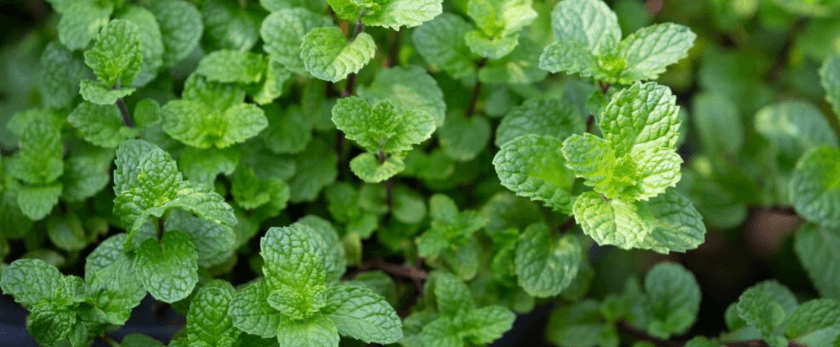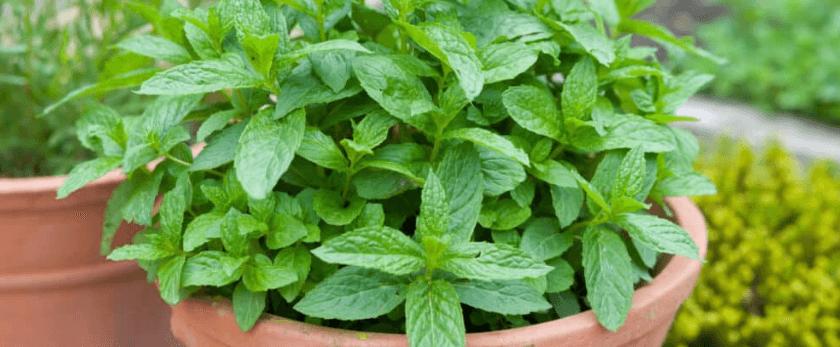Mint is a popular herb known for its refreshing scent and versatile uses in cooking, drinks, and even home remedies. It's also a relatively easy plant to grow, making it a great addition to any garden or indoor space. In this article, we'll discuss how to care for mint, the best time to grow it, and common problems you may encounter. By following these tips, you'll be able to grow your own mint and enjoy its benefits while also contributing to a greener, more sustainable future.
How to Care for Mint
Watering
Mint plants require consistent moisture, but they don't like to be waterlogged. It's important to keep the soil evenly moist, but not soggy. You can achieve this by watering your mint plant deeply once or twice a week, depending on the weather and soil conditions. If you're growing mint in a container, make sure it has proper drainage holes to prevent water from accumulating at the bottom.
Light
Mint plants thrive in partial shade to full sun, making them a great choice for both indoor and outdoor growing. If you're growing mint indoors, place it near a window that receives at least 4-6 hours of sunlight per day. If you're growing it outdoors, make sure to choose a spot that receives morning sun and afternoon shade. Too much direct sunlight can cause the leaves to wilt and dry out.
Soil
Mint plants prefer well-draining, fertile soil with a pH level between 6.0-7.0. You can use a general-purpose potting mix or amend your garden soil with compost to improve its texture and nutrient content. Avoid using heavy clay soils, as they can retain too much moisture and cause root rot.
Fertilizer
Mint plants are not heavy feeders, but they can benefit from a balanced fertilizer once a month during the growing season. You can use a slow-release organic fertilizer or a liquid fertilizer diluted to half strength. Be careful not to over-fertilize, as this can lead to excessive leaf growth and a weaker flavor.
Pruning
Pruning is an essential part of caring for mint plants. Regularly trimming your mint plant will help promote bushier growth and prevent it from becoming leggy. You can prune your mint plant by pinching off the top 1-2 inches of the stem, just above a set of leaves. This will encourage new growth and keep your plant looking full and healthy.

What is the Best Time to Grow Mint?
Mint is a hardy perennial plant that can be grown year-round in most climates. However, the best time to grow mint depends on your location and the type of mint you're growing. In general, mint plants prefer cooler temperatures and can struggle in hot, humid weather. If you live in a warm climate, it's best to grow mint in the fall and winter months when the temperatures are milder.
If you're growing mint from seeds, it's best to start them indoors 8-10 weeks before the last frost date in your area. This will give them enough time to establish before transplanting them outdoors. If you're growing mint from cuttings, you can do so at any time of the year, as long as the plant is actively growing.
Common Problems with Mint
While mint is a relatively easy plant to grow, it can still encounter some common problems. Here are a few issues you may encounter and how to address them:
Pests
Mint plants are susceptible to pests such as aphids, spider mites, and whiteflies. These pests can cause damage to the leaves and stems, leading to stunted growth and a weakened plant. To prevent pest infestations, regularly inspect your mint plant and remove any affected leaves or stems. You can also use natural pest control methods such as neem oil or insecticidal soap.
Diseases
Mint plants can also be affected by fungal diseases such as powdery mildew and rust. These diseases can cause the leaves to turn yellow or brown and eventually die. To prevent fungal diseases, make sure to provide adequate air circulation and avoid overhead watering. If your mint plant does get infected, remove the affected leaves and treat the plant with a fungicide.
Root Rot
Overwatering and poorly draining soil can lead to root rot in mint plants. This can cause the roots to become mushy and eventually kill the plant. To prevent root rot, make sure to water your mint plant only when the top inch of soil is dry and use well-draining soil. If your plant does get root rot, it's best to discard it and start with a new plant.
Conclusion
Mint is a versatile and easy-to-grow herb that can add flavor and freshness to your dishes and drinks. By following these tips on how to care for mint, you'll be able to grow your own supply and enjoy its benefits all year round. Remember to also be mindful of responsible disposal methods for your mint plant, such as composting or using it in recipes, to contribute to a more sustainable future. Happy growing!










